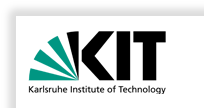| [grosch96csr] | Franz-Josef Grosch, A Syntactic Approach to Structure Generativity -- A Referentially-Transparent Higher-Order Module Language, Technical Report, 1996. |
Abstract
Advanced module systems like Standard ML's support structure generativity.
Structure generativity denotes the mechanism that parameterized modules
(functors) generate a "new" module instance (structure) for every
application to a suitable argument. This operational behaviour is
essentially a side effect. Since interfaces in general depend on
module instances, module instances are computationally characterised
as "stamps" for the purpose of interface-checking.
This paper presents a typed module calculus that makes instances of
modules syntactically apparent in expressions and interfaces. The
module calculus has a simple rewriting semantics without side effects.
Interface-checking is based on a type system with dependent functions,
strong sums and additionally a non-standard variant of weak sums.
A module system derived from the module calculus forms a separate
layer above some typed core language. As a demonstrating example,
we sketch M/SML, a module language on top of core SML.
Download
| [PDF] |

